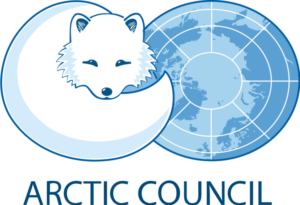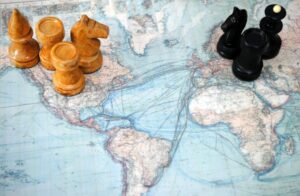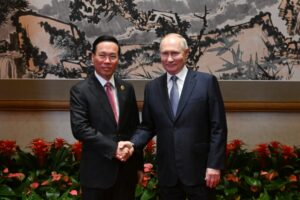At the end of 2021, 25 December, the James Webb telescope, a partnership between NASA, ESA (European Space Agency) and CSA (Canadian Space Agency), was launched by the French/European Ariane-5 rocket.
With one of the most advanced technologies of space observation, James Webb seeks to be the new source of historical observations about the galaxy and the universe, bringing more recognition to the alliance in the space sector between the US and Europe.

What’s the difference between NASA and ESA?
The recognized NASA was created in 1958 as a form of investment in technological advancement in space by the United States Government. With the history of more than 200 missions, the agency has established much of the basic parameters on space exploration.
ESA, created in 1975, is an intergovernmental agency between 20 European Union Member States plus the United Kingdom and Switzerland, and has great recognition mainly for its Ariane-5 space transport station in French Guiana. This Ariane-5 allowed the launch of the James Webb NASA technology telescope.
ESA is as respectable as NASA in the aerospace field, even if it does not have the same popularity. The European agency is smaller, has no manned space flight program, but they have a history of success launching satellites and interplanetary probes.
The comparison between the two bases is like comparing the World Cup with the Olympics, which are similar in many respects even if they have differences in their structures, but both successful.
In which space programs do NASA and ESA partner?
The two agencies have been working together because of their common economic and spatial interests in several projects, such as:
- The construction of an autonomous spacecraft to land on Mars
- Hera Mission, protecting against asteroids on possible Earth paths
- The production and launch of the James Webb telescope
- Partnering with ESA in NASA’s Artemis Mission
The main logistics of this partnership is in relation to ESA’s technological structures, providing launch modules and use of its space bases, with the study and development of NASA.
NASA and ESA working together to launch the James Webb Space Telescope
The James Webb Space Telescope is one of the great revolutions in the space science field of this century. After more than 25 years of study, the Telescope has advanced imaging technology and seeks to assist the large and predecessor Hubble space telescope, which has already brought discoveries such as the expansion of the universe from images captured from Supernova.
Being the most powerful telescope ever produced, there was an investment of more than US$10 billion by NASA, accounting for around dand US$12 billion with the partnership of the CSA and ESA, and more than 40 million hours of human labor. The production of the project was led by the American agency and launched by the ESA base in French Guiana by the Ariane-5.
James Webb’s goal is to observe the first light emitted by the universe (Big Bang), to observe the set of galaxies of this early universe and the birth of stars and proto galaxy systems. With its launch in December 2021, only after six months in orbit will it be able to get its first capture of these images.
Why this cooperation between the United States and the European Union in the space field is important
The alliance between the US and the European Union has deepened over the years, forming a concise front as geopolitical powers of the West. His partnership for the advancement in space is one of the investments to implement this political contract.
Space is one of the new fields of demonstration of geopolitical power, for symbolizing technological advancement but also for the development potential it allows (both social, science and information, military and political).
By investing in several projects together by NASA and ESA, there is a demonstration for the world and the international scene that the United States and the European Union want to further strengthen the transatlantic alliance, and that space cooperation is part of this strengthening.
How cooperation between Russia and China in space affects geopolitics in this potential military field
Economic agreements between the Asian powers Russia and China have deepened more and more in recent years, including space alliances.
Since 2011, China and Russia have had agreements on space technology production. This alliance takes place in an old exchange, since the Soviet Union, but which has resumed with all forces now in 2021.
This deepened and materialized with the Chinese monitoring for the Russian GLONASS (Global Navigation Satellite System). In addition, Russia granted territory to Sut Beidou satellites (Chinese GPS system). While China has the capital and technology, Russia has the space expertise and natural resources to make space research available.
In June 2021, the two countries did the planning of a joint lunar station, in a race with NASA Artemis project.
This financial and technological association to advance in space through the East means a technological and social progress, but also a potential military and developmental power that are investing and mobilizing.
Therefore, both the US and European Union alliance and that of China with Russia, shows an organization of nations for the advancement of a development in space. The limits of the atmosphere are no longer the limits of the geopolitical game. Space is the new geopolitical and military domain of the moment.
























[…] Artemis 2 with the objective of crew testing, carried out by the American space agency NASA, as a partnership between the USA and […]